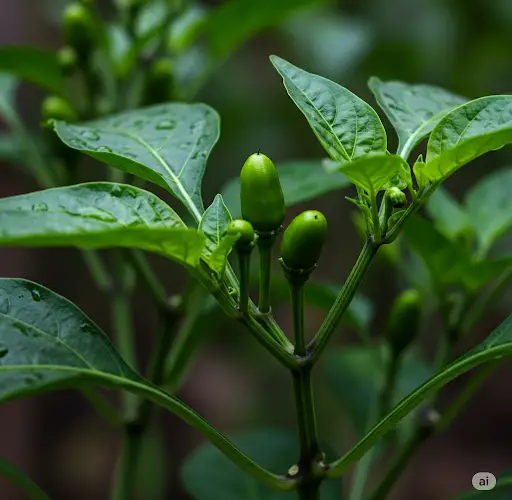Peppers are a popular choice among home gardeners thanks to their vibrant colors, wide variety of flavors, and usefulness in everything from fresh salads to spicy sauces. However, one challenge many growers face is getting pepper seeds to sprout quickly and develop into strong seedlings. These seeds can be notoriously slow to germinate, especially in cooler climates.
Fortunately, with a few easy adjustments to your seed-starting routine, you can speed up germination and give your pepper plants a stronger start. Here’s how to ensure your pepper seeds sprout faster and grow into vigorous, productive plants.
1. Choose Fresh, High-Quality Seeds
Start with viable seeds. Pepper seeds lose viability over time, and older seeds take longer to germinate—or may not germinate at all. Check the seed packet for the date and choose seeds that are no more than two years old. For best results, use seeds from reputable suppliers or save your own from healthy, mature plants.
2. Pre-Soak Seeds to Jumpstart Germination
Pepper seeds have a hard outer shell that can delay germination. Pre-soaking them in warm water softens the shell and helps trigger the sprouting process.
How to soak seeds:
-
Fill a small container with warm (not hot) water—about 95–105°F (35–40°C).
-
Soak the seeds for 8 to 12 hours, but no more than 24 hours.
-
After soaking, drain and plant them immediately.
Some gardeners add a touch of chamomile tea or hydrogen peroxide to the soaking water to reduce fungal risk, but plain warm water works well for most varieties.
3. Use Bottom Heat to Warm the Soil
Peppers originate from warm climates and need higher temperatures to germinate properly—ideally between 75°F and 85°F (24°C–29°C). Room temperature alone is often too cool to trigger fast germination.
Solution:
Use a seedling heat mat under your seed tray to maintain consistent warmth. This simple investment can cut germination time in half. Be sure to monitor soil temperature with a thermometer to avoid overheating.
4. Maintain Moisture—But Not Too Much
Pepper seeds need consistent moisture to germinate but should never sit in soggy soil. Too much water can lead to damping-off or seed rot, while too little will cause seeds to dry out and stall.
-
Use a spray bottle or gentle watering method to keep the soil moist but not soaked.
-
Cover seed trays with a humidity dome or clear plastic wrap to trap moisture and warmth.
-
Once seeds sprout, remove the cover to prevent mold growth and improve airflow.
5. Start with a Quality Seed Starting Mix
Avoid using regular garden soil, which can be too heavy and may harbor pests or disease. Instead, use a light, sterile seed-starting mix that retains moisture while allowing good airflow.
A good seed mix should be:
-
Fine-textured and well-draining
-
Free from large chunks or debris
-
Ideally pH-balanced for seed germination (between 5.5 and 6.5)
You can also make your own by blending peat moss or coco coir with perlite or vermiculite.
6. Provide Bright, Consistent Light After Sprouting
Once your pepper seeds sprout, they’ll need plenty of light to grow into strong seedlings. Without it, they’ll become leggy and weak.
-
Place trays in a sunny south-facing window, or
-
Use grow lights for 14–16 hours a day, keeping lights 2–3 inches above the seedlings
Adjust the height of the lights as plants grow to maintain the optimal distance.
7. Be Patient—Some Varieties Take Longer
Different pepper types germinate at different speeds. Hotter varieties like habaneros, ghost peppers, and Carolina Reapers may take up to 3 weeks or more to sprout, while bell peppers and jalapeños typically germinate in 7–14 days under ideal conditions.
Don’t give up if your seeds don’t sprout immediately—especially with super-hot varieties. Continue to keep soil warm and moist while waiting.
8. Optional: Use the Paper Towel Method for Better Visibility
If you want to closely monitor germination, try the paper towel method:
-
Place pre-soaked seeds between two moist paper towels.
-
Seal them in a plastic bag or container.
-
Keep them warm (75–85°F) and check daily.
-
Once roots emerge, gently transfer the seedlings to pots.
This method helps identify viable seeds and reduces wasted space in trays.
Final Tips for Stronger Seedlings
-
Thin seedlings so only one plant grows per cell or pot to prevent crowding.
-
Fertilize lightly once true leaves appear, using diluted liquid fertilizer.
-
Harden off seedlings gradually before transplanting them outdoors by exposing them to increasing sunlight and outdoor conditions over 7–10 days.
By following these simple steps—soaking seeds, applying heat, maintaining moisture, and giving your seedlings the right light—you’ll improve your germination success and grow stronger, healthier pepper plants. With the right start, your peppers will thrive and reward you with an abundant harvest all season long.



